Triyuginarayan Temple | The Sacred History of Lord Shiva & Goddess Parvati’s Wedding
There are some places where time stands still, and that is where every stone whispers tales of eternal love. Triyuginarayan Temple, nestled in the serene hills of Uttarakhand, is one such divine destination.
Known as the sacred spot where Lord Shiva and Goddess Parvati were united in holy matrimony, this temple isn’t just a spiritual landmark but a living celebration of love and togetherness.
For couples dreaming of a wedding that feels both magical and meaningful, Triyuginarayan Temple is more than a venue, it’s a blessing.
Before we dive into why so many weddings are hosted at Triyuginarayan Temple, let’s uncover the rich history that makes this temple a symbol of eternal love.
🔴 Latest News & Live Updates for Triyuginarayan Visitors & Couples (2025)
1) Road Status: The route to Triyuginarayan Temple is generally open year-round, but heavy monsoon (July–August) and winter snowfall can cause temporary closures due to landslides or icy roads. Always check local updates before traveling.
2) Wedding Restrictions: Note that all marriage registrations and ceremonies are paused from July 16 to August 17, 2025, due to the holy month of Shravan. Adjust your dates accordingly to avoid last-minute issues.
Quick Facts about the Triyuginarayan Mandir (About Temple, History & Significance)
| Detail | Information |
|---|---|
| Temple Name | Triyuginarayan Temple or Akhand Dhuni Triyuginarayan Mandir |
| Historical Significance | Associated with the celestial wedding of Lord Shiva and Goddess Parvati as per Hindu scriptures |
| Meaning of Triyuginarayan | Tri means Three Yug means Era and, Narayan for Lord Vishnu “Lord Vishnu (Narayan) of Three Yugas” signifying that Lord Vishnu witnessed this divine place & event across three yugas |
| Estimated Age | Believed to be over 3,000 years old, with references in ancient Puranas |
| Location | Triyuginarayan Village, Rudraprayag District, Uttarakhand, India |
| Geographical Coordinates | 30.5933° N, 79.0471° E |
| Elevation | ~1,980 meters (6,500 ft) above sea level |
| Main Deity | Lord Vishnu (presiding deity), with Shiva and Parvati revered |
| Architectural Style | Kedarnath-style stone architecture with intricate carvings |
| Sacred Fire | Akhand Dhuni – an eternal flame believed to have burned since the divine wedding |
| Important Ponds | Brahma Kund, Rudra Kund, Vishnu Kund (used during the wedding rituals) |
| Scriptural Reference | Mentioned in Skanda Purana and other ancient texts |
| Famous For | Spiritual weddings, historical and mythological significance |
| Best Time to Visit | March–June & September–November |
| Nearest Major Shrine | Kedarnath Temple (about 25 km away) |
Quick Trivia about Triyuginarayan Temple
Here are some fascinating facts about the temple that make it unique among Himalayan shrines.
| Fact | Detail |
|---|---|
| Akhand Dhuni (Eternal Fire) | The sacred flame has been burning since Lord Shiva and Parvati’s wedding in Satya Yuga. |
| Sacred Pond – Saraswati Kund | Believed to have originated from the staff of Lord Vishnu; water is considered highly pure. |
| Connection with Kedarnath | The temple lies on the ancient pilgrimage route to Kedarnath and shares similar architecture. |
| Marriage Witness | Lord Vishnu himself witnessed and conducted the marriage rituals of Shiva & Parvati here. |
| Wedding Ritual Practice Today | Couples tie the knot in front of the same Akhand Dhuni as in the mythological wedding. |
The Legend & History of Triyuginarayan Temple
Triyuginarayan Temple is the very stage where one of the greatest love stories in Hindu mythology unfolded – the sacred union of Lord Shiva and Goddess Parvati.
Team Plannersy
History & Mythology Timeline of Triyuginarayan Temple
Triyuginarayan Temple has a deep connection with Hindu mythology and history, spanning multiple Yugas. Below is a detailed timeline highlighting its significance across different eras.
| Era / Century | Significance / Event | Key Source / Evidence |
|---|---|---|
| Satya Yuga (1st Yuga) | The divine wedding of Lord Shiva and Goddess Parvati took place here. Lord Vishnu played the role of Parvati’s brother. | Skanda Purana, oral traditions |
| Meaning of Triyuginarayan | “Tri” = Three, “Yugi” = Yugas, “Narayan” = Lord Vishnu. The temple witnessed events across three Yugas. | Etymology from Hindu scriptures |
| Sacred Fire Origin | The eternal flame (Akhand Dhuni) was lit during the wedding and still burns today, symbolizing eternal marital bond. | Mythological accounts & local lore |
| Treta Yuga | Associated with sages performing yajnas near the temple, reinforcing its sanctity. | Puranic texts |
| Dvapara Yuga | Maintained as a holy site during Mahabharata era; believed that Pandavas visited during pilgrimage to Kedarnath. | Oral traditions & Puranas |
| Early Medieval Period (8th–9th century) | Temple structure built in Kedarnath-style architecture (Nagari style, stone slabs). | Archaeological & stylistic analysis |
| Adi Shankaracharya Era | Revived Kedarnath pilgrimage routes, which included Triyuginarayan temple. | Historical records of Shankaracharya’s reforms |
| 10th–12th Century | Gained prominence as a Shaivite and Vaishnavite convergence point due to its unique mythological significance. | Regional inscriptions, local folklore |
| 19th Century | Documented by British explorers and Indian historians as a key Himalayan pilgrimage site. | Colonial survey records |
| Modern Times (20th Century) | Temple recognized as a cultural heritage site; marriages began being officially registered by local priests. | State tourism archives |
| Present Day | Major destination for spiritual weddings and tourism; rituals replicate the original divine wedding ceremony. | Uttarakhand Tourism & local tradition |
According to ancient scriptures, this temple marks the divine wedding site of Shiva and Parvati, witnessed by Lord Vishnu himself.
It is believed that the eternal flame, known as the Akhand Dhuni, which burns even today in the temple premises, was the sacred fire before which the celestial marriage took place. This fire has never extinguished for thousands of years, symbolizing eternal love and commitment, making it the ultimate inspiration for couples who dream of a forever bond.
The name Triyuginarayan itself reflects this timelessness: ‘Tri’ means three, ‘Yug’ means era, and ‘Narayan’ refers to Lord Vishnu. The temple is believed to have existed across three Yugas (Satyug, Tretayug, and Dwapar Yug), and its sanctity continues into the present day.
Pilgrims and devotees believe that tying the knot here blesses couples with lifelong harmony and unwavering love. It’s a legacy of love carried forward by countless weddings celebrated here every year.
Architectural Beauty & Spiritual Significance of Triyuginarayan Temple
When you step into Triyuginarayan Temple, you’re walking into a piece of living history, framed by nature’s most serene backdrop.
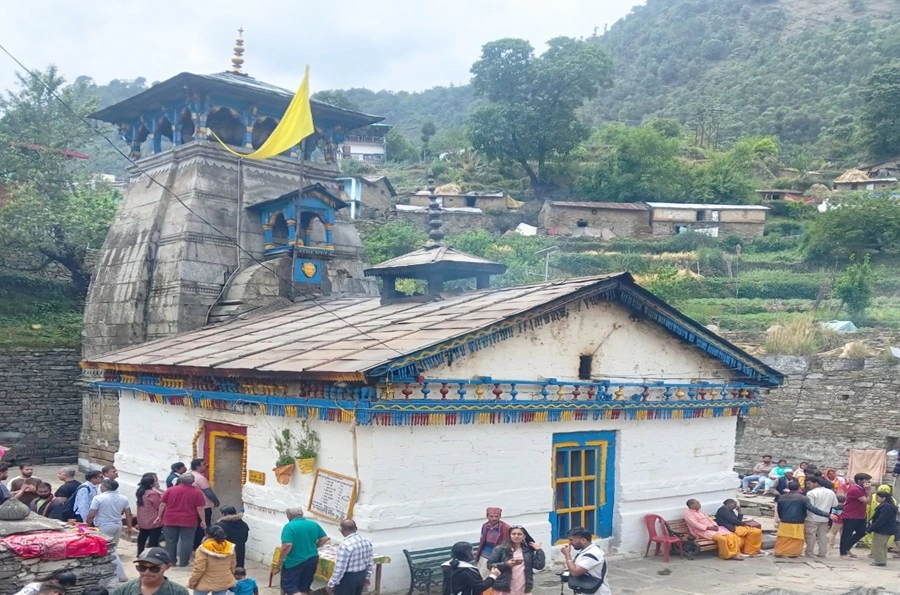
The temple showcases classic Kedarnath-style architecture, built entirely with stone and crowned with a striking Shikhara (tower) that rises gracefully against the Himalayan sky. Every carving and pillar reflects ancient artistry, preserved for centuries. The sanctum sanctorum houses the idol of Lord Vishnu, the divine witness of the sacred wedding, while the idols of Goddess Lakshmi and Goddess Saraswati complete the holy trinity.
What truly captures every visitor’s heart is the Akhand Dhuni, the eternal flame that has burned since the time of Lord Shiva and Goddess Parvati’s wedding. It glows in a stone-lined enclosure, radiating warmth even in the chilly mountain air. Couples often take holy ashes from this fire as a blessing for their married life.
Adding to its charm are the three sacred kunds (water ponds) – Rudra Kund, Vishnu Kund, and Brahma Kund – believed to have been created by the gods themselves for the wedding rituals.
Even today, devotees take a dip in these holy waters before offering prayers, as a mark of purity and new beginnings.
This perfect blend of spiritual significance and ancient architecture makes Triyuginarayan Temple a journey into divinity and a promise of eternal love.
Why Triyuginarayan Temple is Popular for Weddings
For couples who believe love is divine, what could be more magical than getting married at the very spot where Lord Shiva and Goddess Parvati began their journey together?
Team Plannersy
In recent years, Triyuginarayan Temple has become one of the most cherished destinations for traditional and intimate weddings in Uttarakhand.




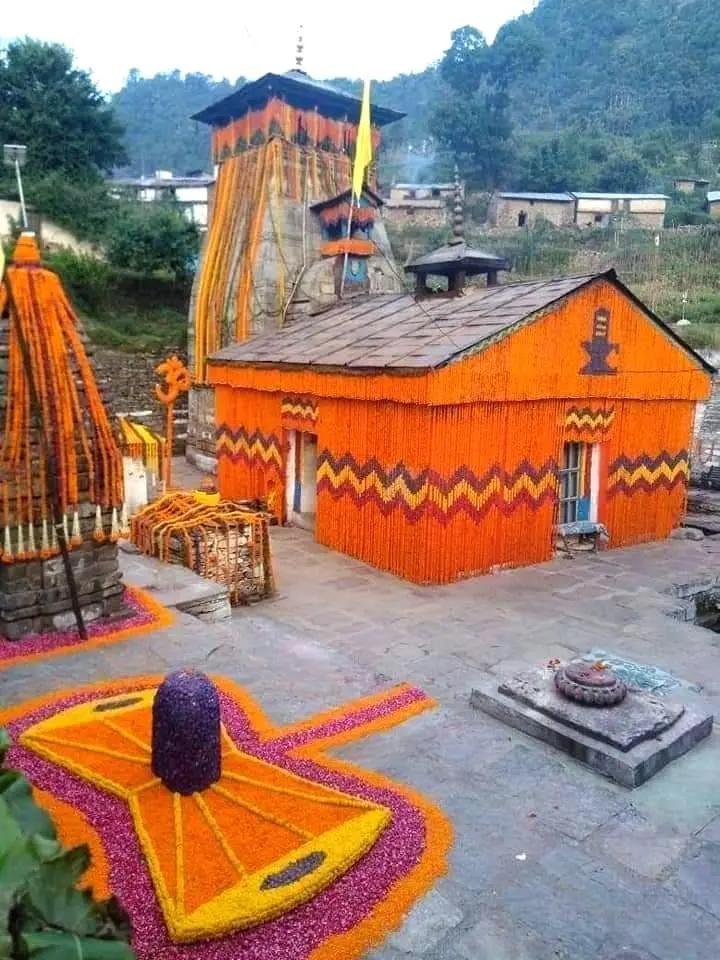
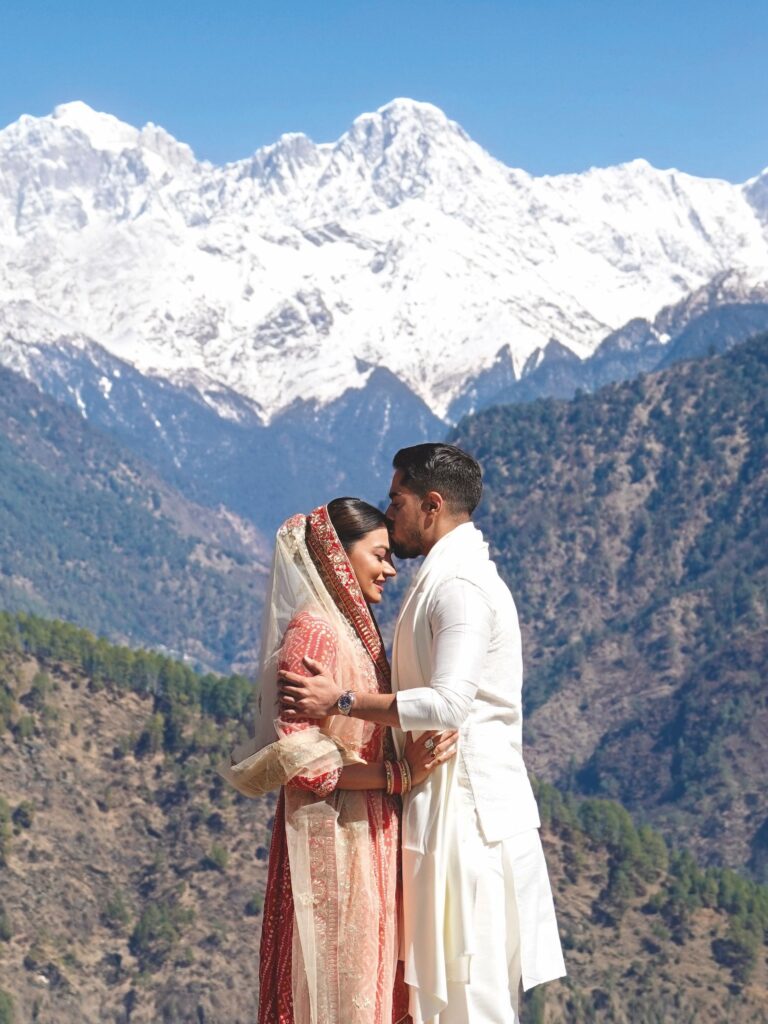

Here’s why couples from across India, and even abroad, choose Triyuginarayan as a sacred temple for their big day:
1. A Wedding Blessed by History
Every couple dreams of blessings for a lifetime of togetherness. At Triyuginarayan mandir, you’re not just tying the knot, you’re walking in the footsteps of Lord Shiva and Goddess Parvati. The eternal flame (Akhand Dhuni) serves as the sacred fire for wedding rituals, making your vows feel truly divine.
2. A Breathtaking Himalayan Backdrop
Perched at an altitude of 1,980 meters, the temple offers panoramic views of the snow-clad peaks and lush valleys of the Garhwal Himalayas. It’s no surprise that wedding photos here look like something out of a dream.
3. Perfect for Destination Weddings
With its serene environment and spiritual significance, Triyuginarayan mandir is ideal for destination weddings in Uttarakhand. Whether you want a small traditional ceremony or an elaborate cultural celebration, the setting adds unmatched grace and grandeur.
4. A Symbol of Eternal Love
For couples who want their marriage to carry deeper meaning, this temple stands as a timeless symbol of love and commitment, something modern venues can’t replicate.
Planning a wedding here requires special permissions and arrangements, and that’s where we step in. From decor that complements the natural beauty to local rituals and legalities, Plannersy helps you create a seamless celebration in the lap of divinity.
Team Plannersy
Rituals & Traditions Followed at Triyuginarayan Temple
Every wedding at Triyuginarayan Mandir is a sacred ceremony that carries forward the legacy of Lord Shiva and Goddess Parvati’s divine union.
Wedding Ritual Highlights at Triyuginarayan Temple
| Ritual | Significance |
|---|---|
| Ganesh Puja | Invokes Lord Ganesha for removing obstacles before the wedding. |
| Navagraha Puja | Harmonizes planetary positions for a blissful married life. |
| Kalash Sthapana | Establishes a sacred water pot as a symbol of purity and prosperity. |
| Var Aagaman | The ceremonial welcome of the groom by the bride’s family. |
| Kanyadaan | The bride’s parents offer her to the groom, symbolizing trust and blessing. |
| Jaimala (Garland Exchange) | The couple exchanges garlands, signifying acceptance of each other. |
| Madhuparka | Groom is welcomed with honey and milk as a gesture of respect. |
| Vivah Homa (Sacred Fire) | Sacred fire is lit, symbolizing divine witness to the marriage. |
| Akhand Dhuni Offering | Wood offering to the eternal flame that has been burning since the divine wedding. |
| Mangal Phera (Seven Circles) | Seven rounds around the holy fire for seven vows of marriage. |
| Saptapadi (Seven Steps) | The couple takes seven symbolic steps together, marking lifelong partnership. |
| Sindoor & Mangalsutra | Groom applies sindoor and ties mangalsutra, signifying marital bond. |
| Ashirvaad (Blessings) | Elders bless the newly married couple for a prosperous future. |
Planning your dream wedding at Triyuginarayan? Check our Complete Wedding Planning Cost Guide for Triyuginarayan Temple
Here’s what makes the rituals here truly special:
1. Holy Bath in the Sacred Kunds
Before the wedding begins, couples and families take a dip in the three holy water ponds:
- Rudra Kund
- Vishnu Kund
- and Brahma Kund.
These kunds are believed to purify the mind, body, and soul before stepping into a lifelong commitment.
2. Seeking Blessings at the Temple
The bride and groom offer prayers at the temple’s main shrine, which houses Lord Vishnu’s idol. This symbolizes his role as the divine witness of the celestial marriage.
3. Marriage Around the Eternal Flame (Akhand Dhuni)
The most significant ritual is the sacred wedding fire.
Couples perform Saptapadi (seven steps) around the Akhand Dhuni, which has been burning since the time of Lord Shiva and Goddess Parvati’s wedding.
This fire is considered the purest witness of vows and is said to bless the couple with unbreakable love.
Team Plannersy
4. Traditional Vedic Mantras
The wedding rituals are performed by local priests, following Vedic traditions. The chants of mantras, the fragrance of incense, and the sound of temple bells create an atmosphere that feels otherworldly.
5. Offering Holy Ashes
After the wedding, couples often collect holy ashes from the Akhand Dhuni as a sacred keepsake and blessing for a prosperous married life.
If you’re planning to follow authentic Garhwali or traditional Hindu wedding rituals at Triyuginarayan, it’s important to coordinate with local priests and authorities well in advance. At Plannersy, we help couples with every detail – from booking the temple to arranging the rituals – so you can experience a wedding that’s as flawless as it is meaningful.
Team Plannersy Tip
Travel Guide for Couples: How to Reach Triyuginarayan Temple & Best Time to Visit
Planning your wedding at Triyuginarayan Temple is about creating an unforgettable journey in the Himalayas.
Here’s everything you need to know to make it seamless:
How to Reach Triyuginarayan Temple
Triyuginarayan Temple is located in Rudraprayag district of Uttarakhand, around 5 km from Sonprayag (the base for Kedarnath).
- By Air: The nearest airport is Jolly Grant Airport, Dehradun (approx. 230 km). From there, you can hire a taxi or book a private cab.
- By Train: The nearest railway station is Rishikesh (approx. 210 km). After that, taxis and buses are available.
- By Road: Triyuginarayan is well connected by road to Haridwar, Rishikesh, Dehradun, and major Uttarakhand towns. The final stretch requires a short trek or drive from Sonprayag.
💡 Plannersy Tip: For a wedding, pre-arrange local transport for your guests – we can help you with reliable cabs and shuttle services.
Nearest Connectivity Options to Triyuginarayan Temple
| Category | Details |
|---|---|
| Nearest Airport | Jolly Grant Airport, Dehradun (Approx. 230 km) |
| Nearest Railway Station | Rishikesh Railway Station (Approx. 210 km) |
| Nearest Major Town | Rudraprayag (Approx. 65 km) |
| Best Season to Visit | March to June (Summer), September to November (Post-monsoon, pleasant weather) |
Best Time to Visit
The ideal time for weddings at Triyuginarayan Temple is March to June (spring-summer) and September to November (post-monsoon).
- Avoid monsoons (July-August) due to heavy rains and landslides.
- Winters are extremely cold and snowy, making travel difficult.
Where to Stay
Accommodation options near Triyuginarayan Temple include:
- Budget Hotels & Guesthouses in Sonprayag and Guptkashi.
- Luxury Stays in Guptkashi or Chopta for a more premium experience.
- Home Stays offering authentic Garhwali hospitality for an intimate vibe.
💡 Plannersy Insight: We help couples book accommodations and arrange guest stays to make sure everyone feels at home in the mountains.
Nearby Attractions
- Kedarnath Temple: Just 30 km away – combine your wedding with a divine darshan.
- Chopta Valley: Perfect for a pre-wedding shoot with scenic backdrops.
- Guptkashi: Another holy town with temples and peaceful ambiance.
Plannersy’s Tips for Hosting Your Dream Wedding at Triyuginarayan Temple
Getting married at Triyuginarayan Temple is a spiritual journey, a promise of love rooted in the Himalayas. But planning a celebration in such a remote and sacred location needs extra care and expertise. That’s where we come in.
Here are some Plannersy-approved tips to make it flawless:
✅ Book Early: The temple sees high demand during peak seasons, so secure your dates well in advance.
✅ Coordinate with Authorities: Special permissions are required for weddings here – Team Plannersy handle this for you.
✅ Plan for Guest Comfort: Arrange transport and comfortable stays nearby. (Explore our Triyuginarayan Travel Guide for detailed routes, best time to visit, and accommodation options.)
✅ Blend Tradition with Personal Touch: While the rituals are sacred, your decor, photography, and experiences can reflect your style – Team Plannersy can make it happen.
💡 At Plannersy, we specialize in creating seamless celebrations – even in the most serene destinations. From handling local logistics to adding creative touches that make your wedding unforgettable, we’re here to make sure your love story shines just like the eternal flame of Triyuginarayan Temple.
📌 Planning a wedding here? Let’s craft it together. Contact Plannersy Today →

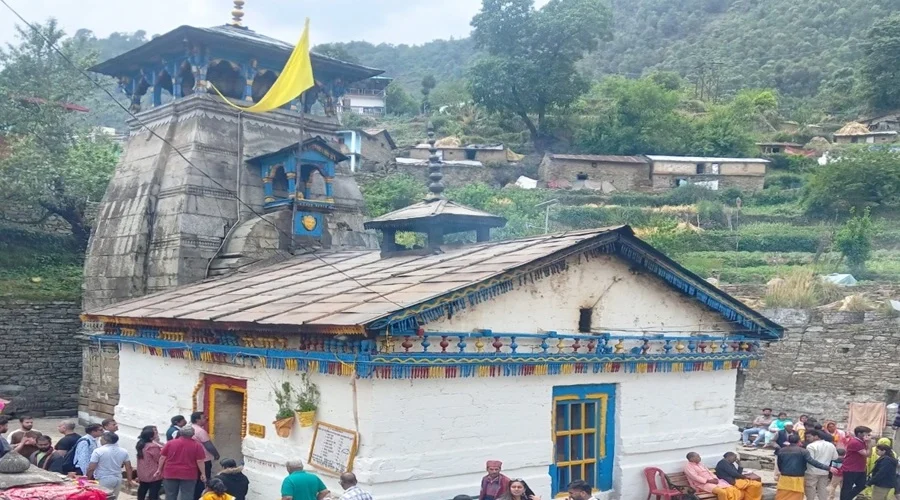
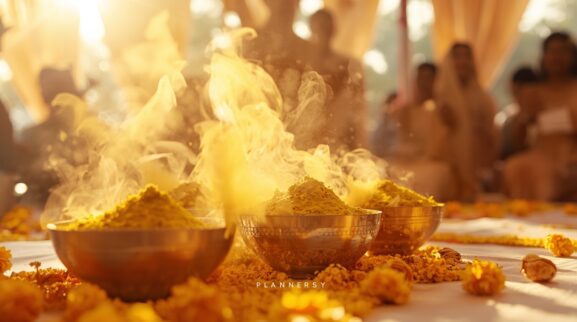

Pingback: emples for Marriage Wish Fulfillment in India (and Love Marriage Blessings) - Plannersy